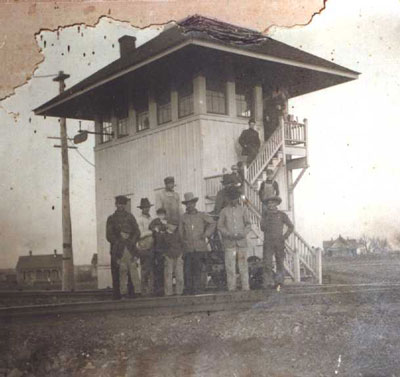
I love railroads.
They are comfortable, quiet, and an enjoyable way to travel, I think. But railroads became important in the progress of the United States, especially after the Civil War.
Business between railroad companies and landowners was not always nice and polite. The small community of Celeste in far northeast Hunt County is a great example. Plus, the trading was not limited to Celeste. Every town had some kind of mischief in the deal throughout the country.
The first railroad in Hunt County was the Katy that pulled into Greenville on October 2, 1880. There was a huge celebration, lots and lots of cheers, food, bands and probably cheap liquor.
One of the lesser-known facts about gaining land rights and funding for railroads was that each town was expected to pay to have a train station and a means to carry crops and livestock to markets. Why do you think railroad magnate and financial speculator Jay Gould and his associates like Tom King accumulated such wealth? Have you heard the words “Robber Barons” used frequently in that time period?
Greenville paid an unknown amount of money to buy the land for those tracks and a freight depot as well as a Katy passenger depot. Not only that, but railroads also needed shops to repair engines, men to work on the tracks, and all sorts of expenditures.
In 1886 the Santa Fe Railroad asked businessmen and professional men in Greenville to help build a track from Wolfe City southwest to Farmerville via the lively little village of Kingston at the Katy railroad. Railroad men, business and professional men met at the Hunt County Court House to discuss the project. When the Santa Fe named its price, the Greenville men snubbed the amount and walked out. Greenville was definitely off the list with the Santa Fe.
So, the Santa Fe men went to Kingston, which also turned them down. What did the Santa Fe do?
They went 3 miles north of Kingston to purchase land on an open prairie crossing the Katy line. They acquired enough to build a town they named Celeste, in honor of the wife of one of the Santa Fe officials. The town was platted in 1886 and shortly received a post office.
Many of the Kingston’s merchants picked up and moved the 3 miles to the depot. The Kingston Masonic Lodge and three churches joined.
By 1900 Celeste had grown and Kingston became almost a ghost town. There were three gristmills and cotton gins. The town had two banks, one of which is still in business. The town had a graded public school, water works, an ice factory and thirty-five local businesses. In 1900, Celeste incorporated.
When World War I hit in 1914 the town was facing a depressed cotton market and boll weevil attacks on the cotton crops. Things only got worse when the Great Depression came along in 1929.
With the industry created at Majors Field flight school in Greenville, many made the move to Greenville. While some remain in homes in the small towns, a large population now inhabits the county seat. Yet, many remember living in country lifestyle.
The Santa Fe freight lines are still used, today.
